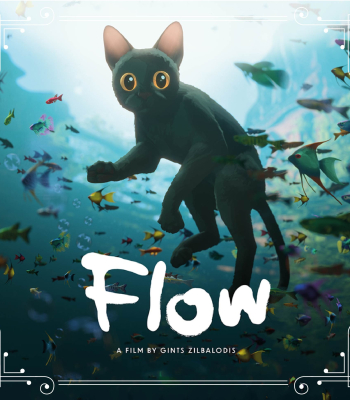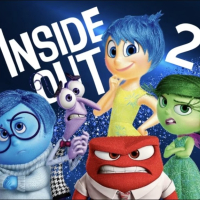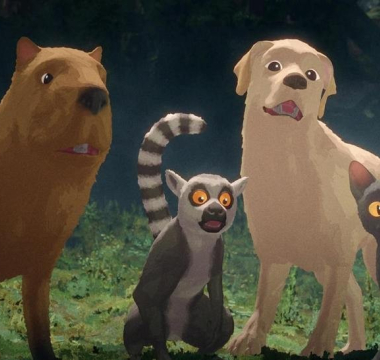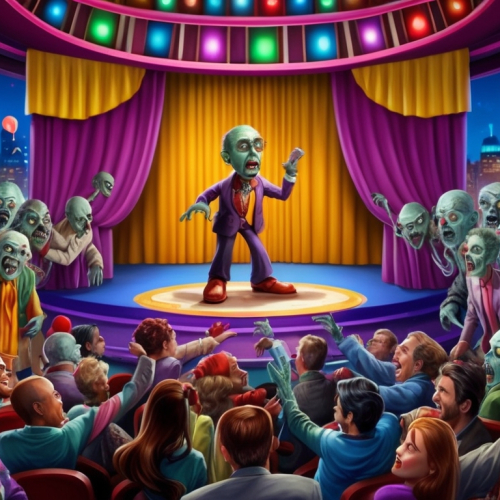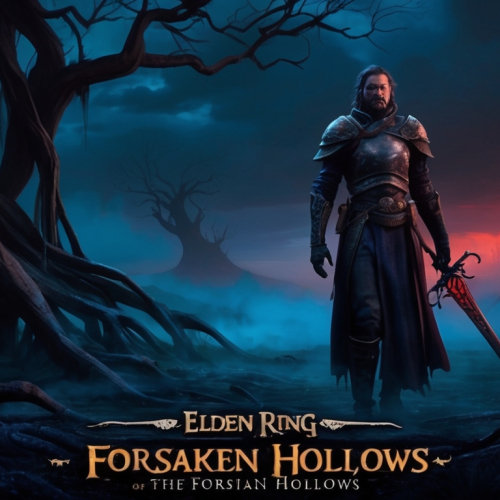When I first encountered Flow on screen, I was immediately drawn into an ever-shifting world that felt as unpredictable as the nature of water itself. My experience was both intellectual and visceral as I navigated its dynamic narrative, immersed in its textured visuals, and allowed my emotions to be carried along by its rhythmic pacing. The film challenged the conventional way of storytelling that I had grown accustomed to, inviting me to embark on a personal journey that transcended ordinary narrative forms.
Immersive Narrative Odyssey
From the very opening scene, I sensed that Flow was a departure from the typical cinematic experience. The narrative unfolded like the meandering current of a river, offering layers that slowly revealed themselves with each passing moment. I found myself piecing together a puzzle where every character and every frame was deliberately designed to evoke a sense of wonder and curiosity. The storyline was open-ended enough to prompt my introspection while firmly guiding me along an emotional path that soared with intensity and subtlety in equal measure.
Visual Tapestry of Flow
The visual presentation of Flow is nothing short of breathtaking. I spent a considerable amount of time analyzing each meticulously crafted scene that blended natural landscapes with surreal imagery. The directors employed a palette of colors that seamlessly transitioned from deep, velvety blues to bursts of luminous orange and green, crafting a visual narrative that felt both organic and otherworldly. Every frame felt like a living painting, and I often found myself pausing to appreciate the interplay of light and shadow, which added an entirely new dimension to the unfolding story.
Auditory Immersion and Dynamic Soundscapes
The film’s sound design is a standout element that had a profound impact on me. The soundscape in Flow, which weaves ambient tones with rhythmic beats, creates a sonic environment that mirrors the fluidity of the narrative. I experienced moments where the music seamlessly led me deeper into the film’s thematic currents, crafting an atmosphere that was both haunting and exhilarating. The smart use of silence juxtaposed with intricate musical layers provided me with an auditory meditation that allowed every subtle note to evoke deep-seated emotions.
Directorial Vision Unleashed
As I watched Flow, I became acutely aware of the bold directorial choices that set this work apart. The director clearly had an uncompromising vision, one that encouraged the audience to question the ordinary and embrace unpredictability. I admired the fearlessness in experimenting with unconventional narrative techniques, such as nonlinear storytelling and abstract imagery. The decision to focus on fluidity, both thematically and visually, demonstrated a brilliant alignment between the film’s concept and its execution—one that left me feeling invigorated and inspired to reconsider the boundaries of cinematic storytelling.
Engaging Character Dynamics
The characters in Flow are not merely vessels for the plot; they are intricate embodiments of human emotion and complexity. I resonated with each protagonist and supporting figure as they navigated their internal landscapes marked by longing, conflict, and transformation. What struck me most was the attention to nuance in character interactions. Each glance, each hesitation, and every subtle gesture added depth to their personalities, turning what could have been a simplistic portrayal into a rich tapestry of interconnected souls. I found that their individual journeys often mirrored my own inner struggles, creating moments of empathetic connection that were as memorable as they were moving.
Layered Thematic Depth
Flow is imbued with multiple layers of meaning that invite a wide range of interpretations. As I watched, I realized that every element—from the swirling water motifs to the transient images of urban landscapes—served as a metaphorical device intended to evoke introspection about life, change, and continuity. The film’s thematic exploration of chaos versus order resonated deeply with my personal experiences, offering me a chance to reflect on the unpredictable nature of existence. I spent many moments contemplating how the narrative structure represented a fluid balance between predetermined destiny and the ephemeral nature of decision-making.
Bold Use of Cinematic Techniques
One of the aspects that fascinated me throughout Flow was its fearless utilization of advanced cinematic techniques. The film deployed innovative visual effects that seamlessly merged the boundaries between reality and abstraction. I witnessed transitions and effects that were both mesmerizing and thought-provoking, urging me to interpret the events depicted on screen beyond their superficial literal meaning. Techniques like slow-motion sequences interlaced with rapid cuts created a dramatic tension that enhanced the storytelling, pulling me deeper into the enigmatic fabric of the film’s universe.
Experimental Soundscapes and Rhythmic Flow
The integration of experimental soundscapes in Flow is something I have rarely encountered in mainstream cinema. It feels as if every auditory cue was carefully orchestrated to echo the film’s core philosophy of fluid change. I appreciated the unconventional mixing of electronic compositions with organic sounds—rain, wind, and even the murmur of distant conversations. This blend provided a backdrop that was as unpredictable as the character arcs, stressing the importance of embracing impermanence while still finding beauty in transient moments. The sound design ushered me into an auditory exploration that challenged traditional film scores, making each scene both impactful and surreal.
Exploration of Reality and Illusion
In Flow, the interplay between reality and illusion is delicately balanced. I was intrigued by the way the film blurred the lines, presenting scenes that initially appeared straightforward but later revealed hidden nuances and ambiguous contexts. This deliberate ambiguity made my viewing experience an intellectual puzzle where not everything was as it seemed on the surface. I spent time questioning whether the characters were navigating a shared reality or simply manifestations of a larger symbolic representation. This level of uncertainty and the invitation to explore hidden layers served as a catalyst for deep internal reflection, making the experience intensely personal.
A Journey Through Symbolism and Metaphor
Symbolism in Flow is omnipresent and intricately woven into the narrative fabric. I was particularly impressed by how certain visual motifs—such as flowing water, reflective surfaces, and dissolving imagery—represented transitions and the impermanence of life. Each symbol seemed to carry weight, guiding my interpretation of the film’s multiple layers. Rather than being overtly didactic, the film subtly suggested that our life’s journey is marked by constant change, much like the ceaseless motion of a river. This symbolism encouraged me to embrace a perspective where change is celebrated and where every moment is an opportunity for growth.
Unpredictable Plot Turns and Intricate Storytelling
The narrative structure of Flow defies the expectations of classical storytelling, which I found both challenging and exhilarating. The film’s unpredictable plot turns ensured that I was never entirely comfortable with a predictable narrative path. I cherished the moments when the storyline suddenly veered into unexpected territory, forcing me to reassess everything I had understood up to that point. These unpredictable twists were not mere shocks but rather purposeful narrative devices that underscored the film’s central themes of impermanence and transformation. Throughout the experience, I found myself eagerly anticipating what new layer of complexity might be revealed next.
Integration of Technological Innovation
Flow also stands out for its seamless integration of technological innovation within its storytelling framework. The film’s use of computer-generated imagery and state-of-the-art animation techniques enabled the creation of mesmerizing sequences that felt both limitless and ethereal. I noticed a perfect harmony between these digital enhancements and the organic storytelling elements, lending a contemporary air to the film without compromising its emotional integrity. This blend of technology and artistry resulted in a visually arresting experience that pushed the boundaries of conventional cinematic narratives and encouraged me to appreciate how modern techniques can serve timeless storytelling themes.
Powerful Visual Effects as Narrative Agents
The application of visual effects in Flow transcends mere decoration; they act as a dynamic extension of the narrative itself. I found that the effects consistently worked to amplify the emotional gravity of central scenes. Rather than distracting me, these visual enhancements deepened my immersion, emphasizing the transformative transitions of characters and settings. The artful use of effects provided tangible expressions of abstract concepts, allowing me to visualize the fluidity of time and the intangible nature of personal growth. This integration created a symbiotic relationship between the visuals and the underlying narrative, a connection that I felt enhanced the film’s overall impact.
Dynamic Pacing and Rhythmic Storytelling
Flow's pacing is one of its most intriguing features, and I was particularly taken by the careful balance between moments of rapid intensity and stretches of meditative calm. There were instances where the rhythm of the film resonated with my heartbeat, bringing me into a shared pulse with the unfolding drama. This dynamic pacing allowed me to experience a range of emotions—from anticipation and exhilaration to introspection and release. Even during quieter scenes, the deliberate pacing held my attention and offered me a chance to absorb the significance of each visual and auditory cue. The resulting rhythm articulated the film’s underlying message that every moment, however fleeting, is essential to the greater narrative.
Intricacies of Cinematic Language and Expression
One of the most compelling aspects of Flow for me was its rich use of cinematic language. The film communicates through a unique blend of visual metaphors, intricate dialogue, and expressive body language, crafting a narrative that transcends conventional verbal communication. As I watched, I became increasingly aware of how every element—be it a lingering camera angle or a subtle facial expression—served as a powerful means of storytelling. This multilayered approach challenged me to interpret scenes on both a literal and symbolic level, urging me to consider how visual ethics and artistic expression can converge to create a new language of cinema.
Examining the Emotional Underpinnings
In my journey through Flow, I found that the film’s emotional undertones were as vital as its visual and auditory components. Every scene was imbued with a raw sensitivity that echoed the complexities of real-life experiences. I was taken by how the film navigated themes of loss, hope, and renewal without resorting to clichés or overt dramatics. Instead, it employed a subtle, almost tender exploration of the human condition. My own emotional responses were reflected in the film’s careful treatment of vulnerable moments, where understated interactions carried immense weight. It is rare for a cinematic work to invoke such a deeply personal reaction, and Flow did so through a masterful display of emotional authenticity.
Dissecting the Narrative’s Structural Complexity
Throughout my viewing, I felt that Flow was meticulously designed to challenge traditional narrative structures. Its nonlinear progression and interweaving of multiple narrative threads created an intricate mosaic that continuously invited me to reconsider previously established perceptions. This structural complexity left me both intrigued and mentally engaged as I attempted to piece together the seemingly disparate narrative elements into a coherent whole. I appreciated how the film defied the conventions of linear storytelling, instead of presenting an experience where every moment is part of a larger, elusive truth—one that refuses to be fully captured by simplistic conclusions.
Reflecting on the Artistic Essence of Flow
Every aspect of Flow, from its captivating visuals to its intricate sound design, contributed to an all-encompassing artistic experience that resonated with me deeply. There was a palpable sense of passion and creativity that emanated from every frame, and I found pleasure in the film’s commitment to exploring the abstract facets of life. The artistic choices felt deliberate and intentional, giving me ample reason to rewatch certain scenes in order to catch nuances that I might have missed initially. This ongoing dialogue between the film and its audience pushed me to think about the broader implications of art, technology, and narrative as interconnected expressions of human creativity.
Exploring the Interplay of Form and Content
One of the aspects that intrigued me most during my experience with Flow was the consistent interplay of form and content. It was evident that every stylistic choice was made to complement the overarching themes of fluidity, change, and the transient beauty of life. The harmonious balance of innovative visual effects, carefully curated soundtracks, and nontraditional narrative pacing created a synergy that underscored the film’s internal coherence. I found that this merging of form and content not only reinforced the story, but also elevated it to a level of abstract artistry that challenged my expectations of conventional filmmaking.
Extended Exploration of Flow's Essence
As I continued to engage with Flow, I was constantly reminded that the film was more than just a collection of visuals and sounds—it was an invitation to explore the deeper currents of existence. Each carefully orchestrated element, every unexpected twist, and the panoramic vistas of expansive settings contributed to a sensory and emotional landscape that was as enigmatic as it was beautiful. I was left pondering the myriad interpretations of the film’s themes, contemplating whether the narrative was a direct reflection of our lived experiences or an allegorical representation of internal shifts and evolving states of being. In this space between literal storytelling and poetic abstraction, I discovered an experience that was exhilarating, intellectually engaging, and profoundly transformative.
